.jpg)
The Angelus, 1857-1859
What is the Barbizon School?
The Barbizon School is an artistic movement closely related to realism that was active in 19th century France. It emerged in opposition to the Romanticism movement, which was the mainstream at the time.
The Barbizon movement was active from 1830 to 1870. Its name is derived from the French village of Barbizon.
At that time, many artists gathered in the forest of Fontainebleau, near the village of Barbizon. One of the most striking characteristics of this artistic movement is its unique flexibility in overall texture, color, brushwork, and form.
Representative Artists
Among the leading painters of the Barbizon School are Camille Corot,Théodore Rousseau,Jean-François Millet,Charles-François Daubigny,Jules Dupré,Constant Troyon,Charles Jacques, and many others.
.jpg)
Charles-François Da ubigny, Les Blanchisseuses, 1870-1874

The Old Oak, 1870
Jean-François Millet, who lived in Barbizon from 1849 to avoid cholera, distinguished himself from other artists by his interest in portraits set against the landscape.
Camille Corot was the earliest to paint in the Fontaine Forest, first in 1829. The English art historian Harold Osborne has criticized the "poetic and literary quality of his work, which distinguishes him somewhat.
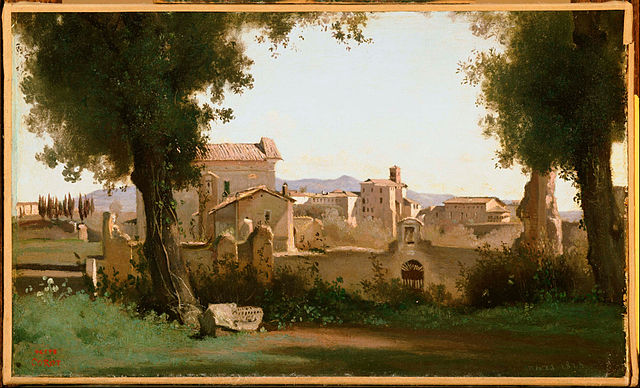
Jean-Baptiste Camille Corot |View from the Farnese Gardens, 1826
Many printmakers also participated. Although etching was the predominant technique, this group was also the main group of artists who used the semi-glossy cliché-verre technique. The revival of etching in France began with this group in the 1850s.

Donkey
The birth of the Barbizon School
In 1824, works by the English painter John Constable were exhibited at the Salon de Paris. His paintings of rural landscapes influenced some of the young artists of the time and motivated them to abandon formalism and work directly inspired by nature.
The natural landscape was new in that it became the subject matter of paintings, rather than merely a backdrop in dramatic history paintings, as had been the case in the past. The French natural landscape was the main subject of the Barbizon paintings. The French natural landscape was a major subject of the Barbizon School.
.jpg)
The Hay Wain, 1821
In the spring of 1829, Camille Corot came to Barbizon and painted the forest of Fontainebleau. He first painted in the Chailly Forest in 1822, and returned to Barbizon in the fall of 1830 and again in the summer of 1831 to work on drawings and oil studies, which he used as the basis for a painting to be exhibited at the Salon of 1830.
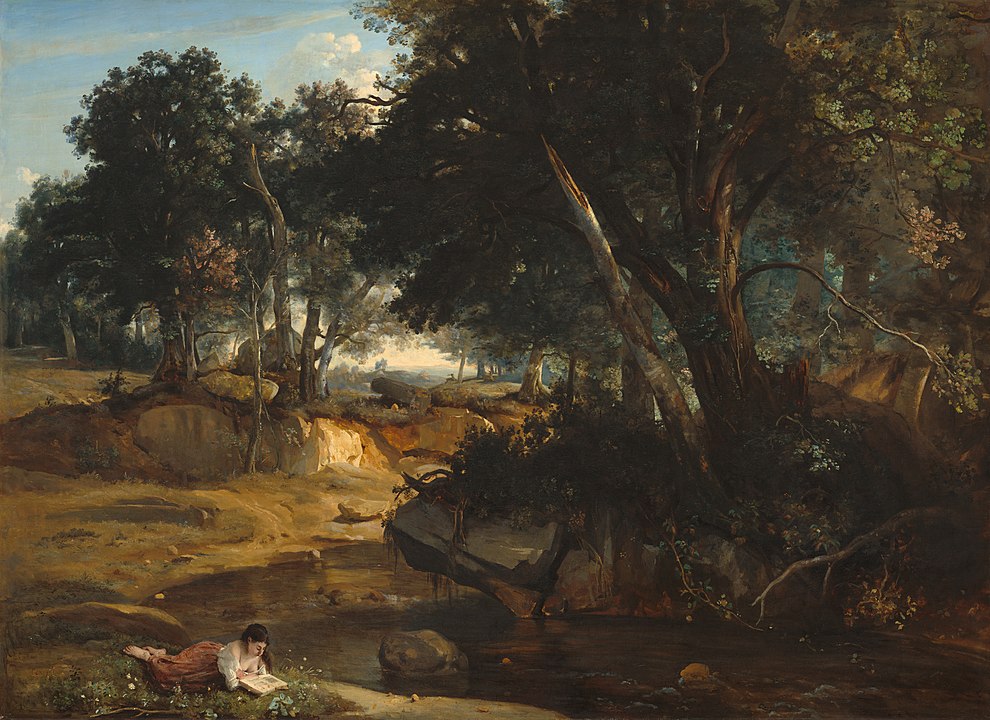
View of the Forest of Fontainebleau, 1830
It was at this Salon that Corot met the Barbizon School painters. He met the Barbizon School painters Théodore Rousseau,Paul Huet,Constant Troyon,Jean-François Millet, and the young Charles-François Daubigny.
Jean-François Millet's Method
Millet expanded his subject matter from landscapes to portraits of peasants, scenes of peasant life, and working in the fields, as exemplified by his 1857 painting " Picking Up the Fallen Ear, " which depicts three rural women working in a wheat field.
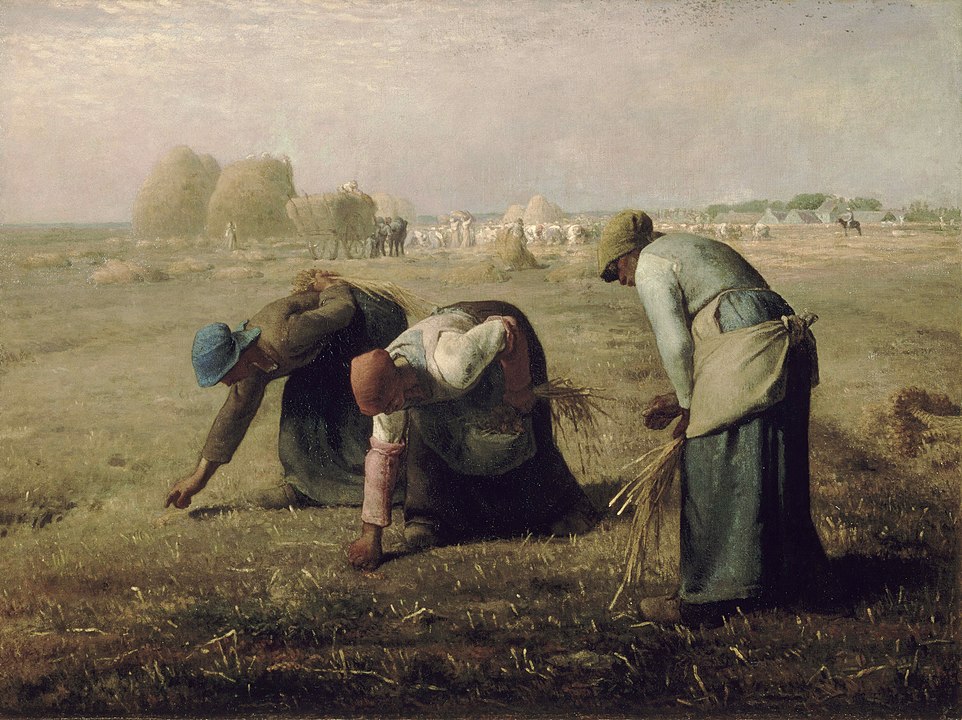
Jean-François Millet,Des glaneuses, 1857
The fallen ears of wheat are picked up by the landowner after the wheat harvest is over. Poor people were engaged in this kind of work. In the background of the painting, the landowners and laborers are depicted as wealthy, in stark contrast to the shadowy, poor rural woman in the foreground.
Millet shifted the focus from the wealthy and prominent to subjects and events of lower social status. Their faces are hidden to emphasize their anonymity and alienation. The women's bent bodies seem to exude the hard labor they perform repetitively each day.
Impact of the Barbizon School on Impressionist painters
In the 1860s, Barbizon painters began to attract the attention of young French painters in Paris.
Some of the young Parisian painters came to the Forest of Fontainebleau to paint landscapes. They included Claude Monet,Pierre-Auguste Renoir,Alfred Sisley, andFrédéric Bazille.
In the 1870s, these artists developed the improvisational techniques used by the Barbizon School and launched the Impressionist movement, which focused on outdoor production to depict landscapes of a moment in time as perceived by the artist.
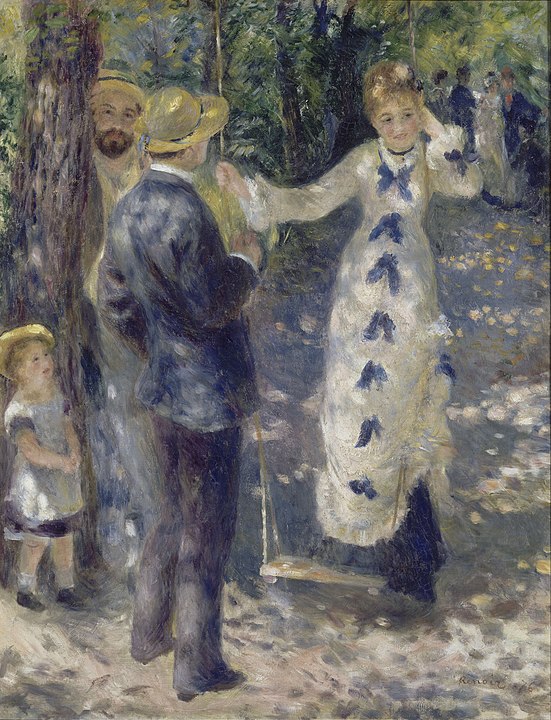
Pierre-Auguste Renoir ( 1876- )
The late Impressionist painter Vincent van Gogh also studied and copied Barbizon painters, including 21 copies of Millet's paintings. Millet copied more than any other painter.
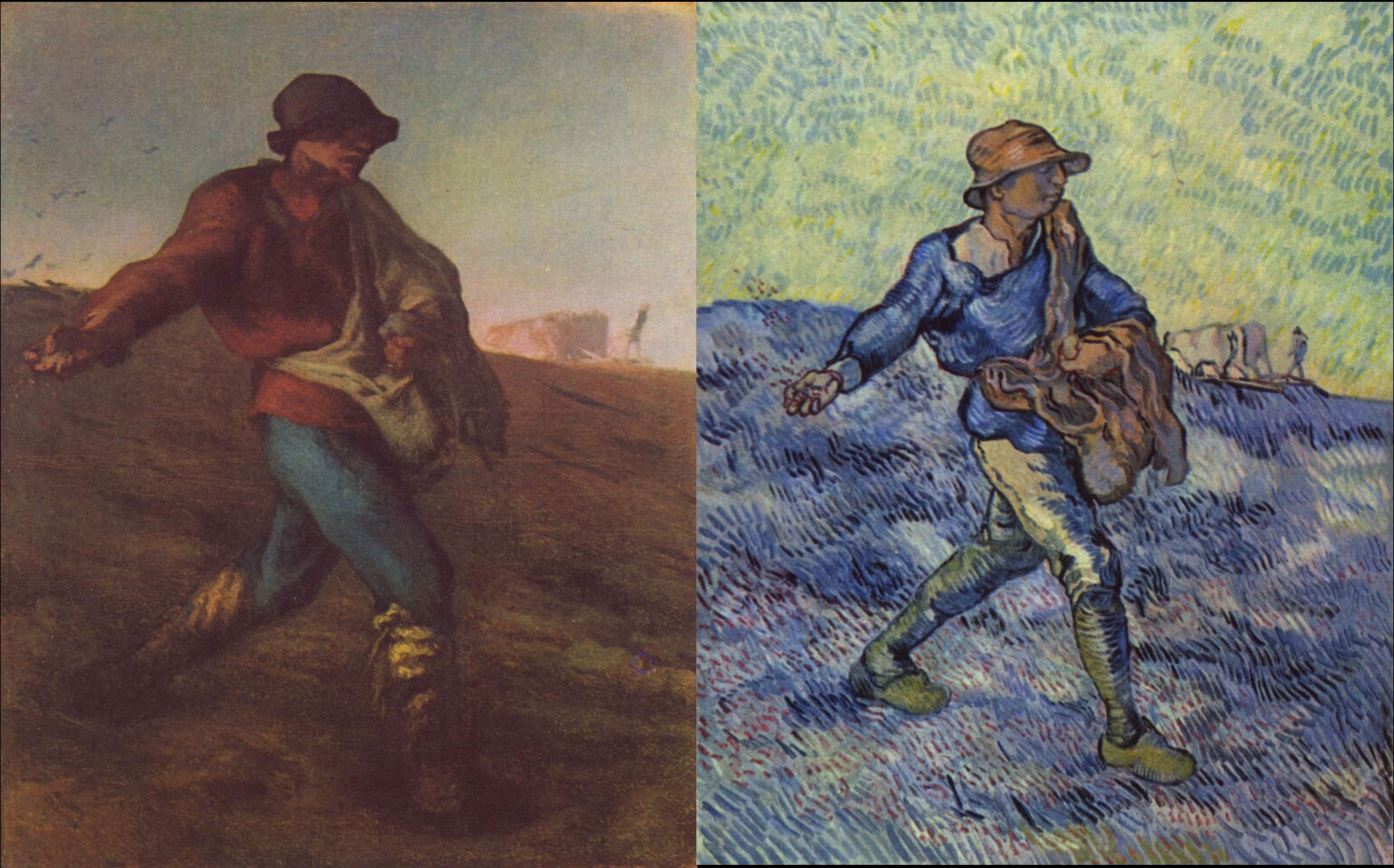
Van Gogh's copy of Millet's "The Sower
Spread to painters outside France
European Countries
Painters from other countries were also influenced by the Barbizon School, and from the late 19th century, many Austro-Hungarian painters came to Paris to study the new movement.
For example, the Hungarian painter János Torma studied in Paris as a young man, and in 1896 he became one of the founders of the artists' colony Nagyvanya in present-day Baia Mare, Romania, bringing Impressionism to Hungary.
A major retrospective of his work, "János Torma, Painter of the Hungarian Barbizon" (February 8-May 19, 2013, National Gallery of Hungary), is being held at the National Gallery of Hungary in 2013.
_In_autumn.jpg)
János Torma|Landscape in Autumn, 1920
Another example. Carl Bodmer, originally Swiss, settled in Barbizon in 1849. Pál László, also Hungarian, lived in Barbizon in the 1870s.
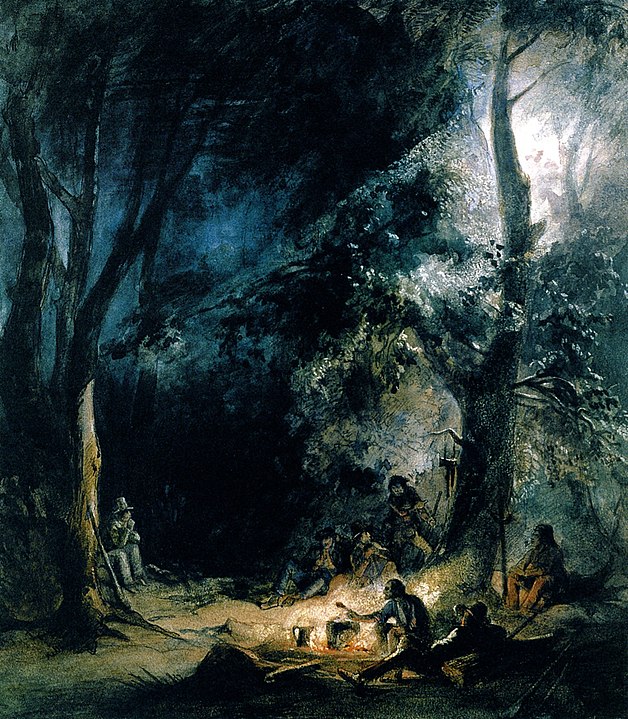
Karl Bodmer,A Stop; Evening Bivouac, 1833
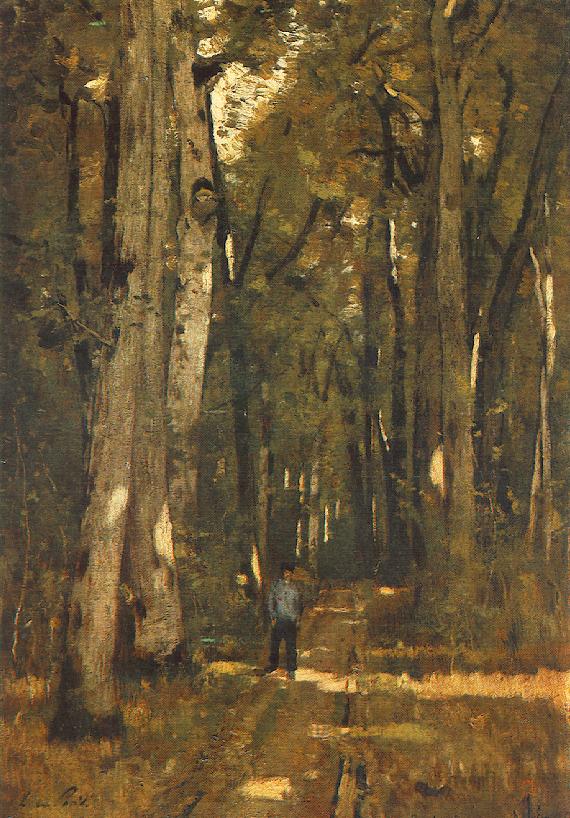
Path in the Forest of Fontainebleau, 1876
America
The Barbizon School painters also had a major influence on American landscape painting. This includes the development of the American Barbizon School by William Morris Hunt.
Both the Hudson River School and its contemporaries studied Barbizon School paintings because of their gentle brushwork and emotional impact or resonance.
George In ness, who attempted to imitate Rousseau's work, is a prime example.

George Inness|Sunrise, 1887
Painter Percy Gray meticulously studied the works of Rousseau and other painters he saw at traveling exhibitions and applied them to his own paintings of California hills and coastlines.
The influence of the Barbizon School can be seen in the paintings of sporting dogs by Percival Rossot ( 1859-1937), who grew up in Louisiana and studied at the Académie Julian.
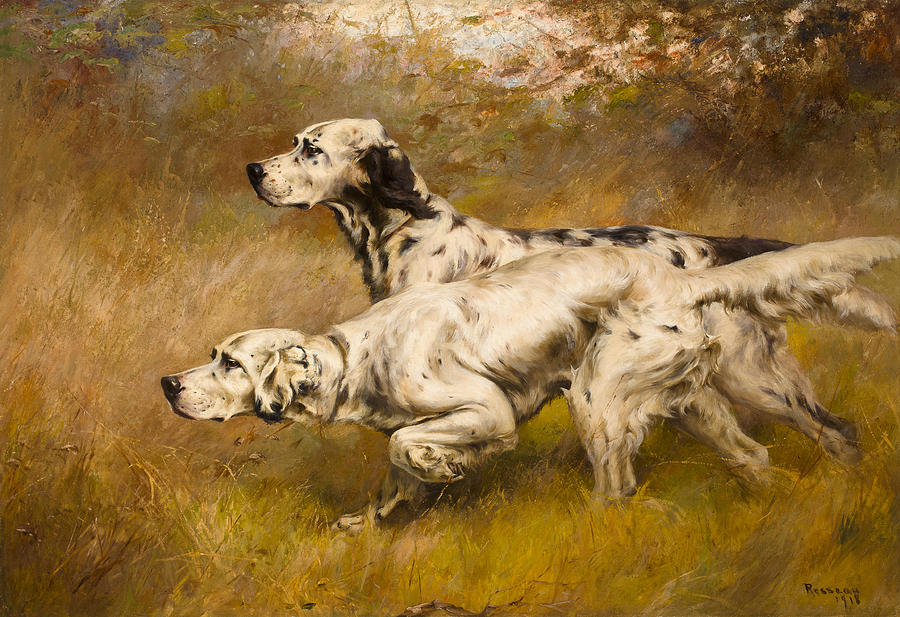
Percival Rossouw